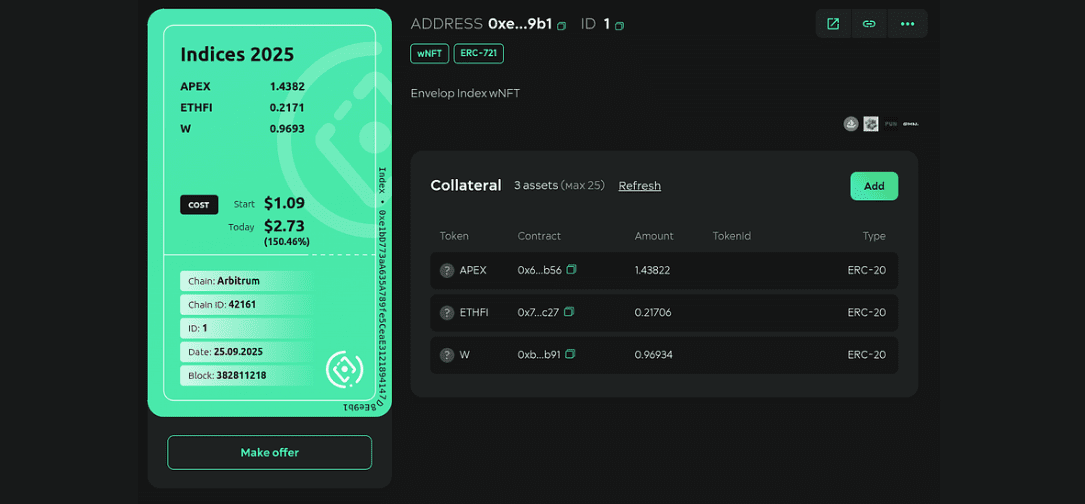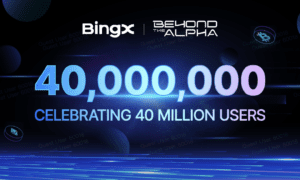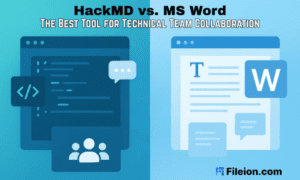Envelop provides public access to the oracle through integration with Quicknode.
Oracle helps Envelop perform operations that aren’t available to the Protocol, or are too expensive to perform using it. Oracle extends the capabilities of the protocol.
Oracle provides detailed NFT metadata, collateral, ownership and transaction history, token contract metadata, and cached NFT assets. Includes spam filtering. Required for creating NFT views in wallets, marketplaces, ticket sales, or token gating.
One of the main uses of the oracle is its use in Web3 indices.
The Envelop Oracle is an integral part of the cryptocurrency index built on the Envelop v2 protocol , which focuses on decentralized liquidity.
The owner of the index, which is an NFT basket of assets, can dispose of them without permission. Disposal is now not limited to the withdrawal of collateral (full or partial). Information about the current collateral balance of each index is available in the Envelop Oracle API.
With the help of Envelop oracle you can:
- Find arbitrage trading strategy
- Train your AI
- Get index collateral data
Examples of applications:
- Crosschain exchange provider with decentralized liquidity
- NFT tickets, token-gating, and gifts
- NFT rentals in the GameFi area
- Crypto indices
Try the oracle on Quicknode or request special conditions on Envelop X .
Envelop is a programmable assets protocol supported by Animoca Brands. The protocol allows you to create vaults with collateral and customizable terms for deposits and withdrawals.
QuickNode is an Enterprise-grade blockchain infrastructure provider.
—
Envelop’s Oracle on QuickNode: A New Chapter in Web3 Infrastructure
Few blockchain technology developments have quietly reshaped Web3 architecture as profoundly as the emergence of intelligent, decentralised oracles. Among these, the integration of Envelop’s Oracle with QuickNode represents a pivotal step towards democratising access to NFT and collateral data within programmable asset ecosystems. The collaboration bridges the gap between on-chain protocol logic and the off-chain data intelligence required for next-generation decentralised applications, all while maintaining speed, transparency, and cost-efficiency.
The Role of Oracles in Envelop’s Ecosystem
To appreciate the significance of this integration, it is essential to understand the function of oracles within Envelop’s programmable assets protocol. Supported by Animoca Brands, Envelop provides a robust framework for creating vaults with collateral and programmable terms for deposits and withdrawals. Within this ecosystem, the oracle layer acts as a crucial intermediary, extending the protocol’s capabilities beyond what is computationally or financially feasible on-chain. It is the conduit through which Envelop accesses intricate data, enabling smart contracts to function intelligently without direct interaction with external systems.
The Envelop Oracle handles operations that the protocol itself cannot efficiently perform. It supplies comprehensive NFT metadata, ownership records, collateral balances, and transaction histories, while also managing spam filtering and caching of assets. These features underpin essential functions such as NFT visualisation in digital wallets, the management of token-gated experiences, ticket sales, and marketplace listings. By integrating such data services, the oracle transforms raw blockchain information into structured, actionable insights.
One of the oracle’s most prominent uses lies within the creation and maintenance of Web3 indices. These indices, NFT baskets representing diversified asset portfolios, depend on the oracle for real-time collateral data and transparency. Through the Envelop Oracle API, index owners can view, manage, and even dispose of the underlying assets in a permissionless manner, while maintaining full visibility over the current collateral balance of each index. The oracle therefore acts as both the guardian and interpreter of asset data across chains.
QuickNode: Industrial-Grade Infrastructure Meets Programmable Assets
The partnership with QuickNode amplifies Envelop’s ambitions by embedding the oracle within a globally distributed blockchain infrastructure platform. QuickNode, an enterprise-grade provider serving billions of API requests per month with 99.99% uptime, offers a high-performance environment where decentralised applications can scale without compromising latency or reliability. By listing the Envelop Oracle as an add-on within the QuickNode Marketplace, Envelop makes its data services instantly accessible to developers across multiple chains.
This integration delivers tangible benefits for both projects and end users. Developers using QuickNode can now activate Envelop’s Oracle directly through their existing infrastructure, dramatically reducing onboarding friction. The system supports major blockchains such as Ethereum, BNB Smart Chain, Arbitrum, Optimism, and others, ensuring cross-chain compatibility from day one. The add-on, currently in Beta as of late 2025, offers public endpoints for ownership look-ups, chain information, collateral retrieval, and metadata access. This arrangement merges the reliability of QuickNode’s infrastructure with the programmability of Envelop’s oracle technology, producing a robust, developer-friendly foundation for Web3 innovation.
Capabilities and Real-World Applications
The Envelop Oracle’s versatility lies in its ability to unify data access across NFTs, DeFi, and index instruments. It supports a broad array of use cases that illustrate how blockchain data can be applied meaningfully in decentralised environments.
In NFT visualisation, for instance, the oracle provides metadata and transaction history in a form that applications can readily interpret. Wallets and marketplaces can use this information to display enriched NFT views, complete with trait data, provenance, and contract information, while filtering spam or fraudulent assets. This transforms the typically fragmented NFT landscape into a cleaner and more accessible experience for users and developers alike.
The oracle also plays an indispensable role in monitoring and managing collateral within crypto indices. These indices, dynamic baskets of NFTs or tokens, require continuous visibility into the value and composition of their underlying assets. Through Envelop’s oracle, participants can obtain detailed information on collateral balances and asset breakdowns in real time. Such transparency makes these indices both tradable and auditable, helping to establish trust and liquidity in what was once a closed, opaque segment of the market.
Beyond static data access, the oracle facilitates advanced strategies such as arbitrage detection and AI model training. Traders can employ the oracle’s cross-chain datasets to identify price discrepancies between wrapped and unwrapped assets, while AI systems can consume structured metadata and historical ownership records to model market behaviour or predict NFT valuations. This convergence of blockchain data and machine learning is expected to underpin the next generation of predictive DeFi and NFT analytics.
Another compelling dimension of the Envelop Oracle’s utility is its relevance to token-gated experiences, ticketing systems, and GameFi rentals. Event organisers can verify ticket ownership and validity in real time; game developers can enable conditional access to digital assets or in-game privileges; and metaverse applications can support rental and lending mechanisms with automated tracking of asset use. In all cases, the oracle acts as the trusted layer that connects the logic of the smart contract with real-world events and digital property rights.
Industry Context and Market Perspective
The launch of Envelop’s Oracle on QuickNode arrives at a time when blockchain data infrastructure is undergoing profound transformation. The broader oracle market, dominated by incumbents such as Chainlink, Pyth, and Band, serves mostly price feeds for DeFi. In contrast, Envelop’s offering occupies a new niche: NFT and programmable asset oracles. This specialisation addresses an unmet need for reliable metadata, collateral intelligence, and cross-chain transparency, capabilities that traditional DeFi oracles are not designed to deliver.
Envelop’s traction is reinforced by its backing from Animoca Brands, one of the most influential investors in Web3 gaming and digital asset ecosystems. The protocol has already issued thousands of wrapped NFTs (wNFTs) across multiple chains and has become a fixture in cross-chain programmable asset design. Its partnership with Blast and other NFT-Fi ecosystems further signals its role in shaping the next wave of decentralised digital ownership frameworks.
From a market standpoint, blockchain infrastructure services are forecast to expand at a compound annual growth rate of approximately 25–30% between 2025 and 2030, driven by demand for scalability, interoperability, and real-time data feeds. As NFTs evolve into programmable financial instruments rather than static collectibles, demand for oracle-based intelligence is expected to increase accordingly. Analysts anticipate that programmable asset oracles could represent one of the fastest-growing subsectors within Web3 data services, given their role in supporting AI-driven asset management, decentralised finance, and metaverse commerce.
Challenges and the Path to Decentralisation
Despite its promise, the oracle model faces several challenges that Envelop will need to navigate. The most significant is the issue of decentralisation. At present, the oracle’s infrastructure depends on centralised hosting through QuickNode and Envelop’s own systems. For the project to align fully with Web3’s decentralised ethos, it must eventually transition to a distributed network of oracle nodes governed by the Envelop DAO. This would not only enhance resilience but also strengthen user trust by removing single points of failure.
Another consideration is the security and integrity of data. Oracles are, by their nature, gateways between blockchains and the external world. As such, they must be resistant to manipulation, spoofing, and malicious data injection. Envelop mitigates these risks through spam filtering, validation routines, and caching mechanisms, yet continual auditing and transparency will be key as adoption scales.
Scalability remains a technical and economic concern. As the oracle’s user base expands, it will need to handle exponentially higher query volumes without compromising response times. Leveraging QuickNode’s infrastructure provides a strong start, but horizontal scaling strategies, caching layers, and efficient data partitioning will be vital for sustained performance. Pricing models must also balance accessibility with economic sustainability, ensuring that entry-level users can experiment freely while enterprise clients fund more intensive operations through premium plans.
The Road Ahead: Towards Predictive and AI-Enhanced Oracles
Looking forward, Envelop’s oracle architecture appears poised for an evolutionary leap. Future iterations may incorporate zero-knowledge proofs to verify data integrity directly on-chain, reducing reliance on trust-based models. Decentralised oracle networks governed by token-based incentives could emerge, distributing responsibility for data accuracy across a federation of nodes. This shift would bring Envelop closer to the ideal of a trustless, self-sustaining oracle ecosystem.
Moreover, the addition of predictive analytics and risk-scoring layers could transform the oracle from a passive data provider into an intelligent advisory system. For instance, the oracle might evaluate an NFT index’s exposure to market volatility or generate confidence scores for digital assets. Such capabilities would attract institutions seeking sophisticated analytics for risk management, portfolio optimisation, and valuation modelling.
As Envelop continues to expand its cross-chain reach and enrich its API standards, it could catalyse broader adoption of NFT-based indices and composable financial instruments. Within the next few years, programmable assets supported by transparent oracles may become as fundamental to digital economies as equities are to traditional finance.
The Broader Implication: Reimagining Data Sovereignty in Web3
At its essence, the Envelop Oracle–QuickNode integration symbolises a paradigm shift in how decentralised data is accessed and utilised. It bridges the once-rigid boundary between on-chain smart contracts and off-chain intelligence, empowering developers to build applications that are both verifiable and contextually aware. For the Web3 ecosystem, this development is a reminder that decentralisation is not merely about removing intermediaries, it is about creating systems capable of self-organisation, verification, and value discovery without human oversight.
By providing a reliable, scalable, and accessible data backbone for NFTs and programmable assets, Envelop is laying the groundwork for an era where digital ownership, liquidity, and data transparency converge seamlessly. It is a step towards a more intelligent, interconnected blockchain economy, one where value is not only created but also understood, audited, and enhanced by the very networks that host it.
Conclusion
The integration of Envelop’s Oracle with QuickNode represents more than a technical milestone; it is a statement about the future of decentralised infrastructure. By externalising data intelligence and opening it to the public via an enterprise-grade platform, Envelop sets a precedent for how blockchain protocols can scale responsibly while maintaining accessibility. Its challenge now lies in deepening decentralisation and embedding predictive, AI-driven insights that will differentiate it from general-purpose data services.
If Envelop succeeds, its oracle could become the de facto standard for NFT and programmable asset intelligence, an essential layer that unites liquidity, transparency, and trust across Web3. The transformation of NFTs from static collectibles into dynamic, collateralised, data-aware instruments may well be remembered as one of the defining technological narratives of this decade, and Envelop’s Oracle on QuickNode stands squarely at its centre.


































